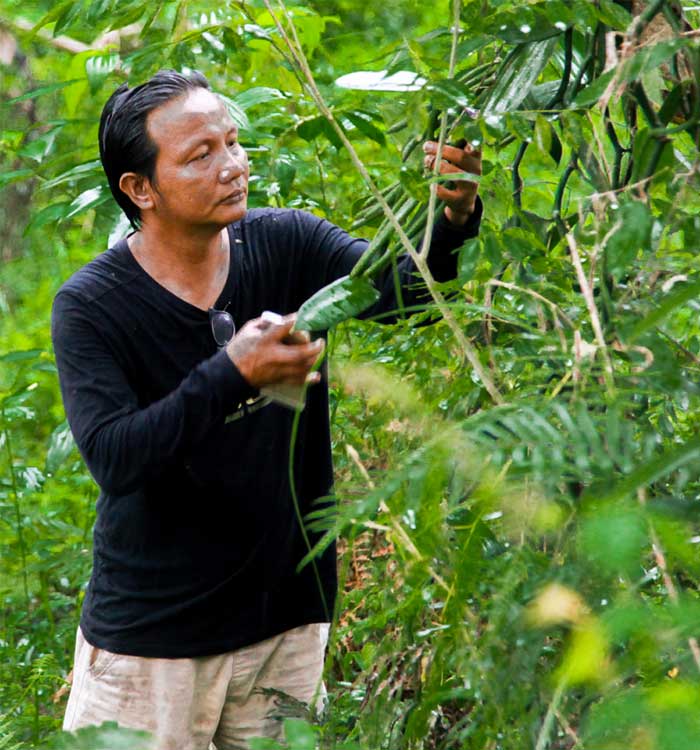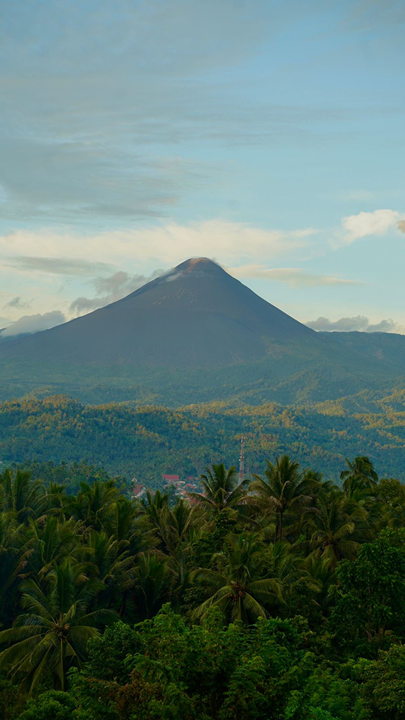Sustainable vanilla producer
and trading partner



Our Folklore
The Soil of Paradise
Tropical spices, our centuries-old heritage that connects Europe and Indonesia.
In Indonesia, there is a proverb that is passed down among generations. Our ancestors said,: “We have the soil of paradise. We can just throw sticks and stones, and they will grow food.” This proverb actually is not too far from the truth. For some staple foods, legume trees, and spice plants, it is true that we can just plant the stick and it becomes a source of food all year long, without any need to provide fertilizer and water. The topography of Indonesia gives advantageous for growing tropical spices because it provides nearly ideal conditions. Dominated by rainforests, it provides optimum humidity and temperature for tropical plants.
Another important factor is that Indonesia has 127 active volcanoes or 13% of the total world’s volcanoes. The volcanic ash, fine sand and other mineral-rich materials produced by volcanic eruptions, in the long run, have a major influence on soil fertility. Materials from volcanic eruptions are nutrient-rich materials that have the potential to improve agricultural soil fertility in the future and can renew soil resources.
It is also worth mentioning that the size of the island also plays a big role in becoming a worldwide spice producer. The Indonesian archipelago stretches around 5000+ kilometers (more than the distance from northernmost Europe to mainland China) crossing around the equator. With more than 17.000+ islands, this ensures stable quantities of spices.
These geographical advantages not only make Indonesia one of the world’s leading tropical spice producers in the world, but also the most resilient one.
Our Plantation
We Are At The Heart Of The Spice Plantation
| Factors | Highly Suitable | Suitable | Less Suitable | Not Suitable | Volcanic land in Southeast Minahasa |
|---|---|---|---|---|---|
| Drainage | Good/Fast | Fair/Fast enough | Inhibited/slow | Inhibited/blocked | Good/Fast (Highly Suitable) |
| Texture | Sandy loam | Silty Clay | Sand and Others | Other | Loam |
| pH | 6-7 | 5-6 | 7-8 | >8 | 6.3 (Highly Suitable) |
| P2O5 (ppm) | >16 | 10-15 | < 10 | < 10 | 32 (Highly Suitable) |
| K2O5 (%) | >1 | < 0.3-1.0 | < 0.3> | < 0.3> | 2.32 |
| Mg (mg/100g) | 1.1-2.0 | 0.4-1.0 | >2.1 | >8 | 1.52 (Highly Suitable) |
| Ca (mg/100g) | 6-10 | 2-5 | < 2 | < 2 | 4.42 (Suitable) |
| Ca (mg/100g) | 6-10 | 2-5 | < 5 | < 5 | 10.6 (Suitable) |
| KTK (cmol/kg) | > 16 | 5>16 | < 5 | < 5 | 10.6 (Suitable) |
Table 1. Soil factors related to the level of soil suitability for vanilla plants and the condition in Adore Vanilla Plantations Source : adapted from Budidaya Tanaman Vanili oleh Balai Penelitian Tanaman rempah dan Obat[1]
We are not only near, but we are at the source
Sulawesi Island and its surrounding islands are the largest spice-producing areas in Indonesia. The country’s vanilla growing requirements specify , that land suitability and soil fertility are important factors in vanilla cultivation. A relatively deep solum, high organic matter content, and a pH ranging from 5.5-7 are some of the indicators of land that is suitable for vanilla cultivation.
Table 1 describes several soil factors and their suitability for vanilla cultivation.

The presence of Mount Soputan
An active volcano, certainly affects soil fertility properties in Southeast Minahasa and its surroundings.
Looking at the chemical parameters contained in volcanic materials in the Southeast Minahasa area and matching them with vanilla growing requirements, it is clear that our plantations have soil fertility properties that are suitable to very suitable for vanilla cultivation efforts.
Of course, the availability of this fertile soil must be supported by other factors that also affect the success of farming, including the capacity and ability to implement good vanilla cultivation practices.
We Are Adore
Your sustainable producer and trading partner
We combine centuries-old heritage with responsible practices to ensure that the spice trade remains sustainable for future generations and produces high-quality—and better tasting—spices for everyone to enjoy.
By implementing sustainable and inclusive practices, we make vanilla production easier, resulting in a stable supply of vanilla with even higher quality than before.
We source from more than five islands in Indonesia, with multiple farms spanning over 500 hectares. But North Sulawesi is the heart of spice production in Indonesia, and that is why we have built our main plantation there to ensure we can produce spices of the highest quality.
Our goal is to improve the spice trade for everyone involved. Our farmers will enjoy better working conditions and livelihoods, our traders enjoy better prices and a stable supply, and consumers can enjoy better quality spices to use.

